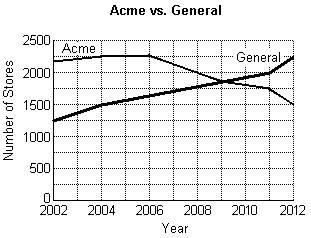Use mathematical induction to prove that the statement is true for every positive integer n.1 ? 2 + 2 ? 3 + 3 ? 4 + . . . + n(n + 1) = 
What will be an ideal response?
Answers will vary. One possible proof follows.
a). Let n = 1. Then, 1?2 = 2 =  = 2. So, the statement is true for n = 1.
= 2. So, the statement is true for n = 1.
b). Assume the statement is true for n = k:
Sk = 
Also, if the statement is true for n = k + 1, then
Sk+1 = Sk + (k + 1)(k + 2) =  .
.
Subtracting, we get:
Sk+1 - Sk = (k + 1)(k + 2) =  -
-  .
.
Expand both sides and collect like terms:
k2 + 3k + 2 =  -
-  =
=  = k2 + 3k + 2
= k2 + 3k + 2
Since the equality holds, then the statement is true for n = k + 1 as long as it is true for n = k. Furthermore, the statement is true for n = 1. Therefore, the statement is true for all natural numbers n.
You might also like to view...
Solve the problem.A certain radioactive isotope has a half-life of approximately 1450 years. How many years, to the nearest whole number, would be required for a given amount of this isotope to decay to 35% of that amount?
A. 901 years B. 942.5 years C. 2196 years D. 2161 years
Solve the system using Gaussian elimination.-5x - y - 5z = -68-8x + 4y + 6z = 34-7x - 9y + z = -46
A. {(4, 3, 9)} B. {(-4, 3, 8)} C. {(4, 9, 3)} D. ?
Write the expression as a Hindu-Arabic numeral.7(101) + 8(100)
A. 870 B. 87 C. 78 D. 780
The double line graph below shows the number of Acme Superstores vs. the number of General Superstores.  In what years was the number of Acme stores greater than the number of General stores?
In what years was the number of Acme stores greater than the number of General stores?
A. 2002 through 2010 B. 2002 through 2008 C. 2009 through 2012 D. 2002 through 2009